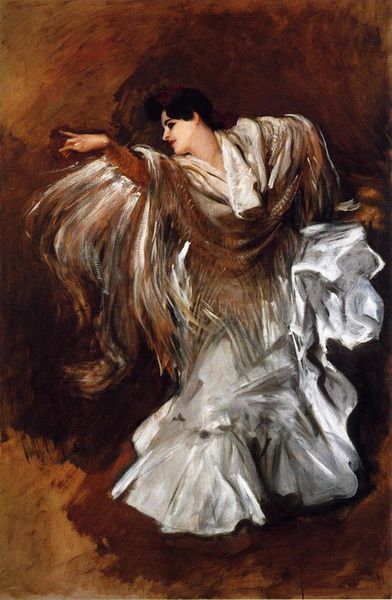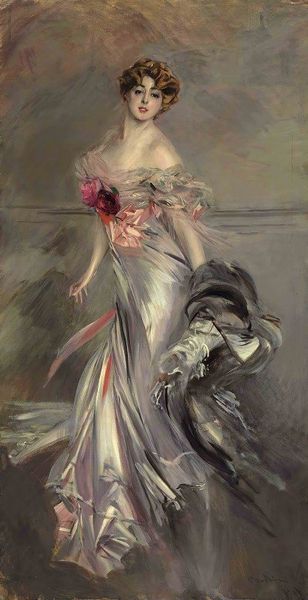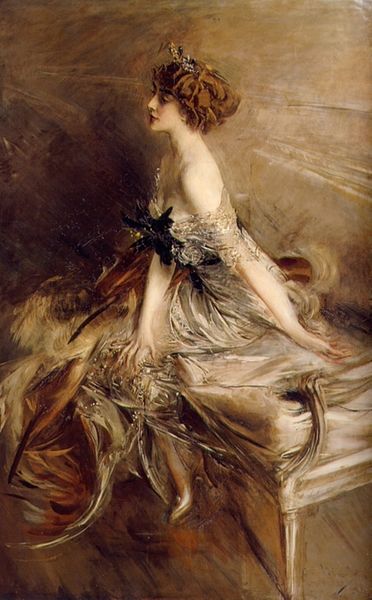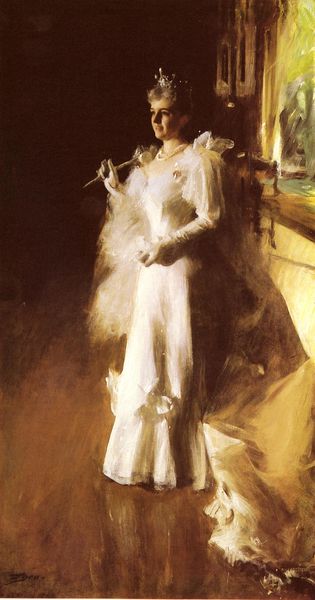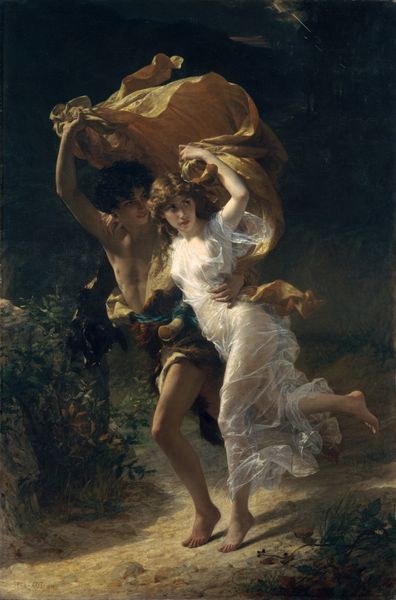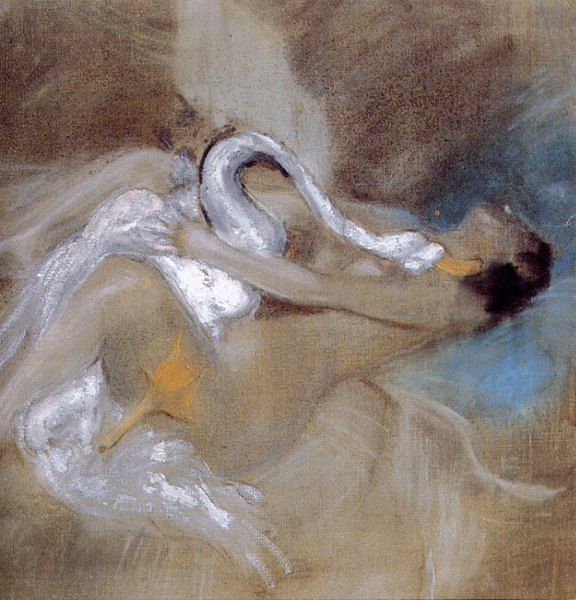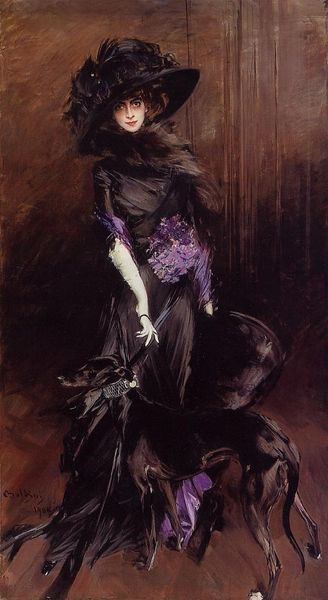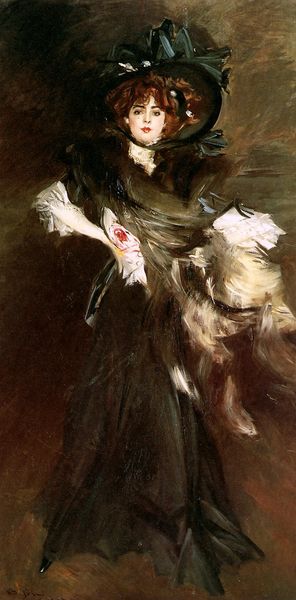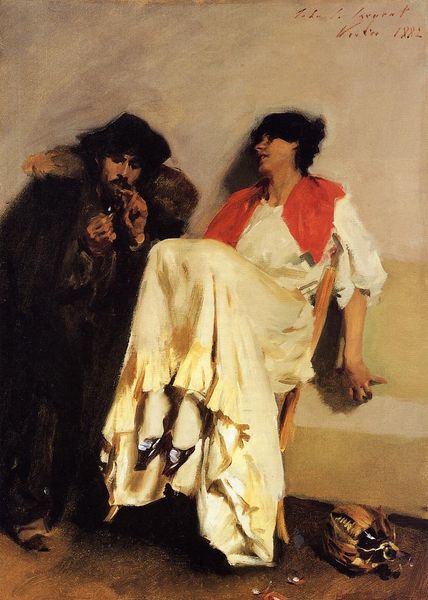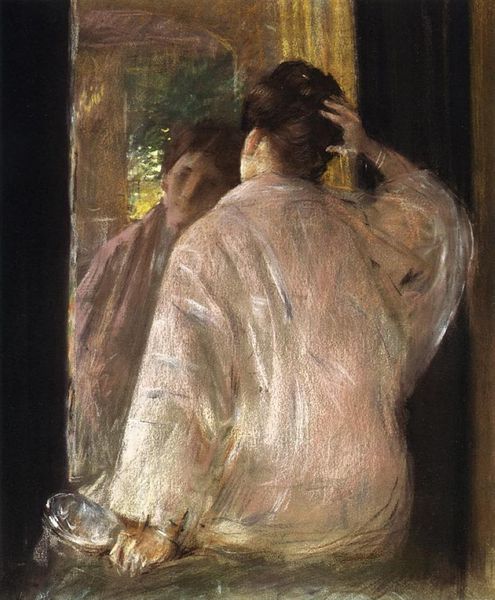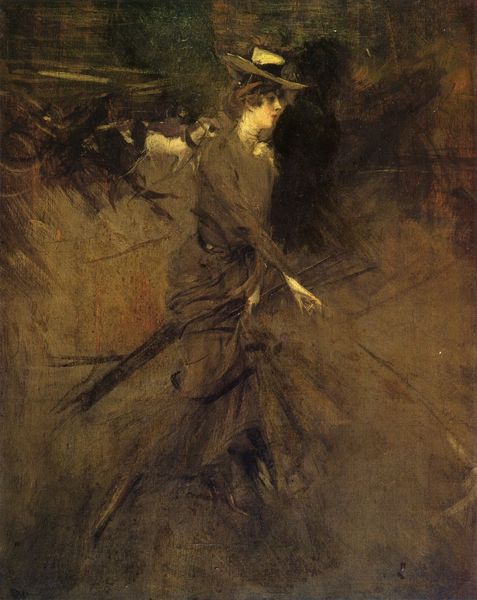
Copyright: Public domain
Editor: This is John Singer Sargent's "The Spanish Dancer, study for 'El Jaleo'," created in 1882 using oil paint. There's something about the dancer's movement that feels captured so perfectly. How would you interpret this work? Curator: Focusing on the materiality, consider Sargent’s manipulation of oil paint, that impasto suggesting dynamism. Think about what it means to represent "Spanishness" for a largely American and European market. This "study" reveals a commercial drive: creating consumable exoticism. What labor went into sourcing those materials and then deploying them? Editor: I see, so it’s less about the dancer herself and more about the materials and the social context in which the painting was made and consumed. What about the way the painting depicts movement? Curator: The loose brushwork simulates motion, yes, but more importantly, think about that motion *as work*. Consider the actual physical effort demanded of flamenco dancers, then the effort of Sargent's brushstrokes, and then the commodification of all of this via display, trade, and collecting. Editor: It sounds like the “Spanish Dancer” is packaged and sold to an audience interested in consuming foreign cultures and artistic ability. Curator: Precisely. By examining these layers of labor and consumption, we demystify the Romantic view, revealing underlying power structures within the art market itself. How has this reframed your initial perception of the piece? Editor: I initially focused on the beauty and movement, but now I realize that Sargent's painting is intertwined with the politics of cultural representation and commodification of labor and skill. It has provided a lens to critically question the materials and processes involved in art creation, and the dynamics that are embedded within them. Curator: Exactly. Viewing it as an aesthetic object is only a starting point.
Comments
No comments
Be the first to comment and join the conversation on the ultimate creative platform.
